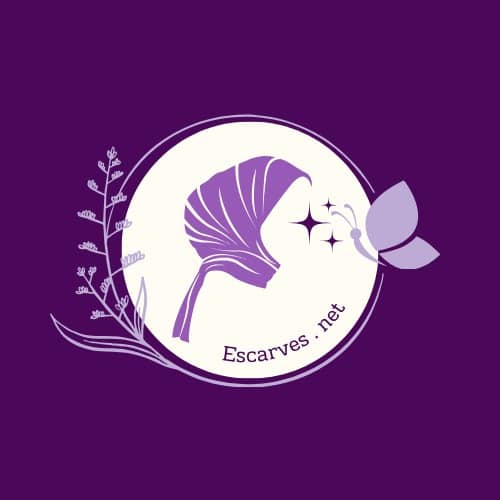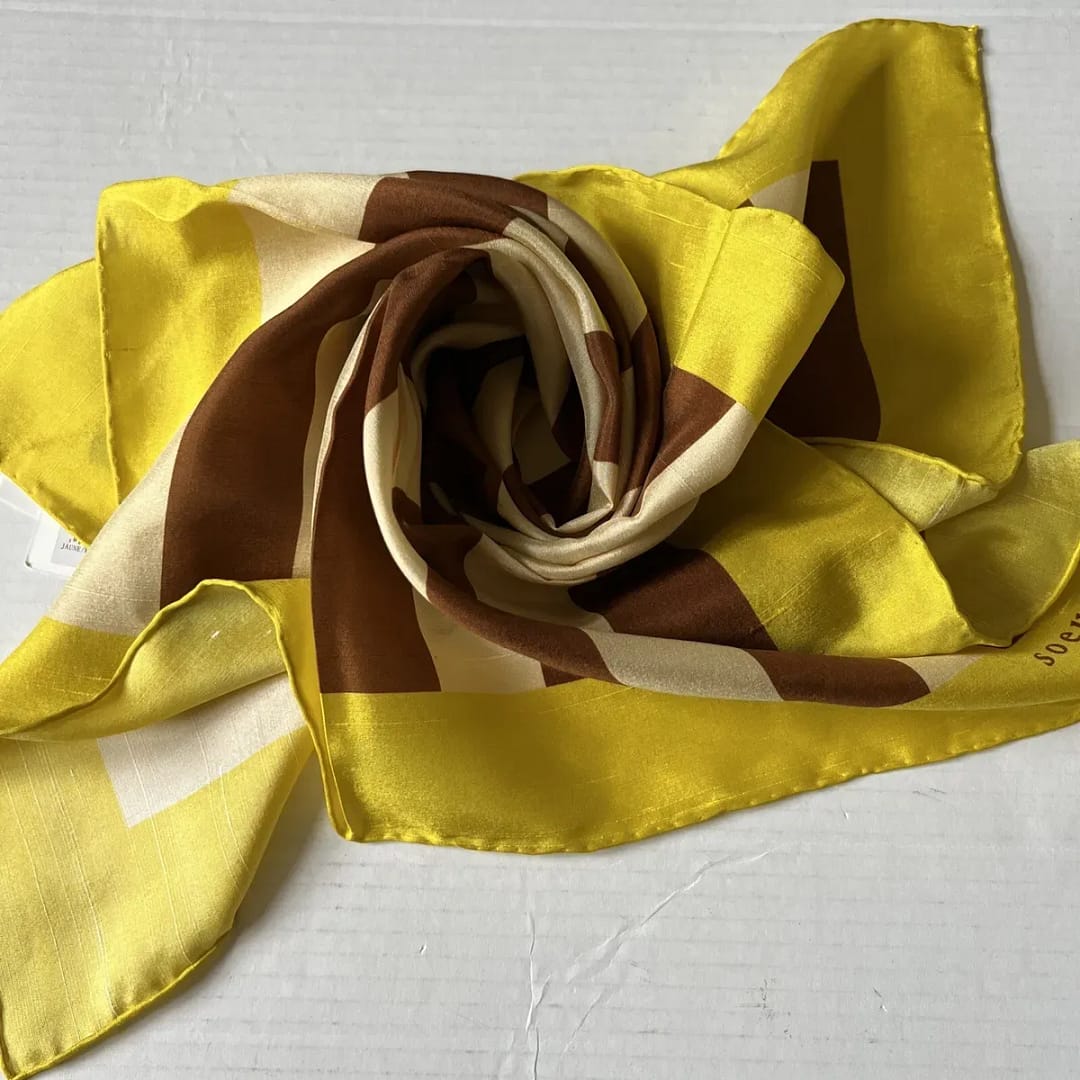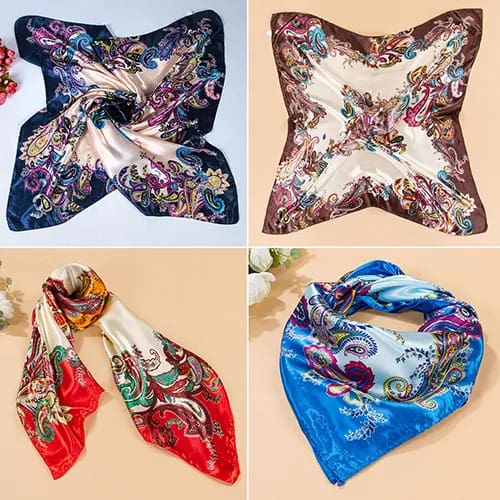Head Scarf Style
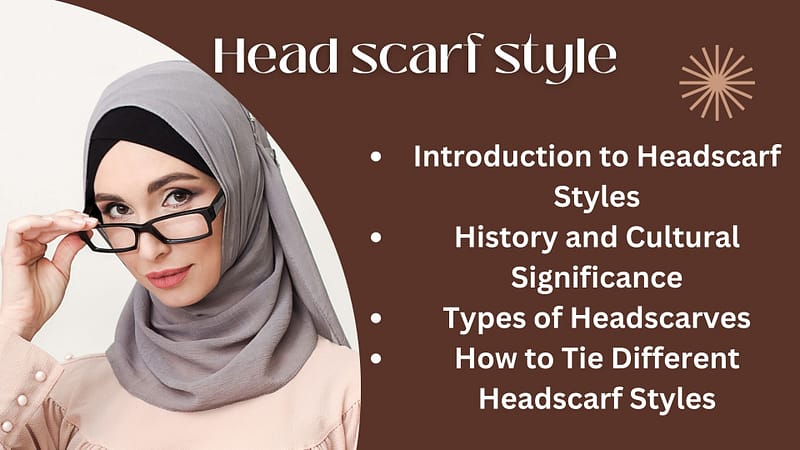
Headscarves have been an integral part of fashion and cultural expression for centuries. They not only serve as a fashion accessories but also hold deep cultural and religious significance in many societies around the world. From traditional wraps to modern interpretations, headscarves offer a myriad of styles for individuals to express their personality and cultural identity.
History and Cultural Significance
Origins of Headscarves
The history of headscarves dates back to ancient civilizations, where they were worn for practical purposes such as protection from the elements. Over time, headscarves evolved into symbols of modesty, religious observance, and cultural identity across various cultures and regions.
Cultural Importance
In many cultures, the style, color, and manner of wearing a headscarf hold specific cultural meanings. For example, in some Middle Eastern countries, the hijab symbolizes modesty and adherence to Islamic principles, while in other parts of the world, headscarves are worn as a fashion statement or to signify affiliation with a particular cultural group.
Types of Headscarves
Traditional Styles
Traditional headscarves vary in style and appearance depending on the cultural and religious practices of the wearer. Examples include the hijab, turban, and keffiyeh, each with its own unique method of tying and cultural significance.
Modern Interpretations
In recent years, headscarves have seen a resurgence in popularity as fashion accessories. Modern interpretations include silk scarves, bandanas, and head wraps, which offer versatility and creativity in styling.
How to Tie Different Headscarf Styles
Step-by-Step Guides
Learning how to tie various headscarf styles can be a fun and creative process. Step-by-step guides and video tutorials are readily available online, offering easy-to-follow instructions for achieving different looks.
Visual References
Visual references, such as illustrations and photographs, can also be helpful in mastering different tying techniques. Experimenting with different styles allows individuals to find what works best for their personal taste and comfort.
Headscarf Styles for Different Occasions
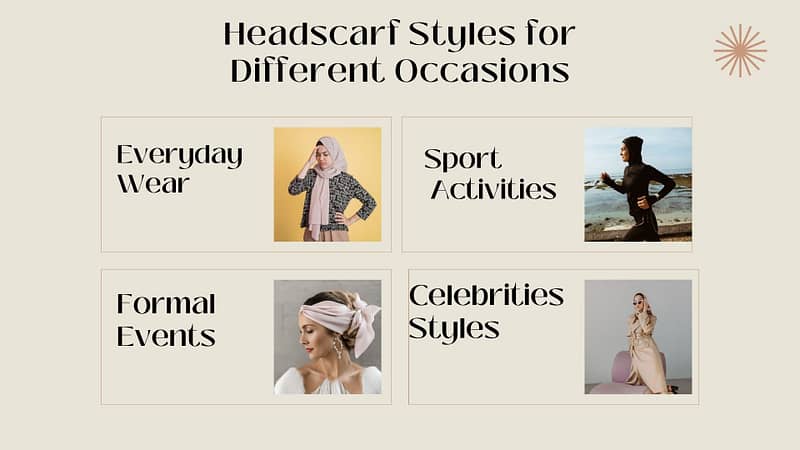
Headscarves aren’t just for one type of event or activity; they can be worn for various occasions, each with its own style considerations and practicalities. Let’s explore how headscarves can be styled for everyday wear, formal events, and sport activities, along with tips for choosing the right headscarf style and addressing common concerns.
Everyday Wear
For everyday wear, comfort and versatility are key. Many people opt for simple yet stylish headscarf styles that can easily complement their daily outfits. A lightweight cotton or silk scarf tied in a loose knot or draped casually over the head can add a touch of flair to a casual ensemble. Alternatively, a snugly wrapped turban-style headscarf can keep hair in place while running errands or going about daily activities. The key is to choose a style that feels comfortable and reflects your personal style.
Formal Events
When attending formal events such as weddings, galas, or dinner parties, a more polished and elegant headscarf style may be desired. Silk scarves in vibrant colors or luxurious fabrics can be draped elegantly over the head or tied into intricate knots for a sophisticated look. Embellished headbands or jeweled clips can also add a touch of glamour to a formal headscarf style, making it suitable for special occasions.
Sport Activities
For sports activities, practicality and functionality are paramount. Headscarves designed specifically for sports, such as moisture-wicking fabrics or adjustable bands, can help keep hair in place and absorb sweat during intense workouts or outdoor activities. Turban-style headscarves made from stretchy materials are also popular among athletes for their secure fit and comfortable feel. Whether you’re hitting the gym or going for a run, choosing a headscarf that stays in place and keeps you comfortable is essential.
Tips for Choosing the Right Headscarf Style
Consideration of Face Shape
When choosing a headscarf style, it’s important to consider your face shape to ensure a flattering look. For example, individuals with round faces may prefer headscarf styles that elongate the face, such as turban wraps or headscarves tied in a diagonal knot. Those with oval or heart-shaped faces may opt for styles that frame the face and highlight their features, such as draped scarves or side knots.
Matching with Outfits
Matching your headscarf with your outfit can enhance your overall look and create a cohesive style. Consider the colors, patterns, and textures of your clothing when choosing a headscarf, and opt for complementary or contrasting options accordingly. For example, a patterned headscarf can add visual interest to a monochromatic outfit, while a solid-colored scarf can complement a bold print or statement piece.
Inspirational Headscarf Style Ideas
Celebrities Styles
Many celebrities are known for their stylish and innovative headscarf looks. From iconic actresses like Audrey Hepburn and Grace Kelly to modern-day fashion icons like Rihanna and Lupita Nyong’o, celebrities have been spotted rocking headscarves on the red carpet and in their everyday lives. Drawing inspiration from their unique styles can help you discover new ways to wear headscarves and express your personality.
Fashion Influencers’ Picks
In addition to celebrities, fashion influencers and bloggers are excellent sources of inspiration for headscarf styling. Whether it’s through Instagram, YouTube tutorials, or personal style blogs, influencers often share their favorite headscarf styles, tips, and tricks with their followers. By following their recommendations and experimenting with different looks, you can find a headscarf style that suits your taste and lifestyle.
Caring for Your Headscarf
Cleaning and Maintenance
Proper care and maintenance are essential for preserving the quality and longevity of your headscarves. Depending on the fabric, scarves may need to be hand-washed or dry-cleaned to avoid damage. Always read the care instructions on the label before washing or storing your headscarves to ensure they remain in pristine condition.
Storage Tips
Storing headscarves properly can help prevent wrinkles and maintain their shape. Consider investing in a scarf organizer or hanging them on a scarf rack to keep them neatly organized and easily accessible. Alternatively, you can fold scarves and store them in a drawer or box, making sure to avoid overcrowding to prevent creasing.
Addressing Common Concerns
Comfort Issues
Some individuals may experience discomfort when wearing headscarves, especially if they’re not accustomed to wearing them or if the fabric is too tight or restrictive. Choosing lightweight, breathable fabrics and experimenting with different tying techniques can help alleviate discomfort and ensure a comfortable fit.
Cultural Sensitivities
It’s important to be mindful of cultural sensitivities when wearing headscarves, especially if you’re not a member of the community to which the headscarf belongs. Avoid appropriating cultural symbols or religious attire, and instead focus on celebrating diversity and inclusivity. If you’re unsure about the cultural significance of a particular headscarf style, consider doing research or consulting with members of the community for guidance.
Conclusion
Headscarves offer a versatile and stylish way to accessorize outfits for various occasions, whether it’s for everyday wear, formal events, or sport activities. By considering factors such as face shape, outfit coordination, and cultural sensitivities, individuals can choose headscarf styles that reflect their personal taste and express their cultural identity. With a wide range of styling options and inspirational sources available, there’s no limit to the creativity and individuality that headscarves can bring to your wardrobe.
